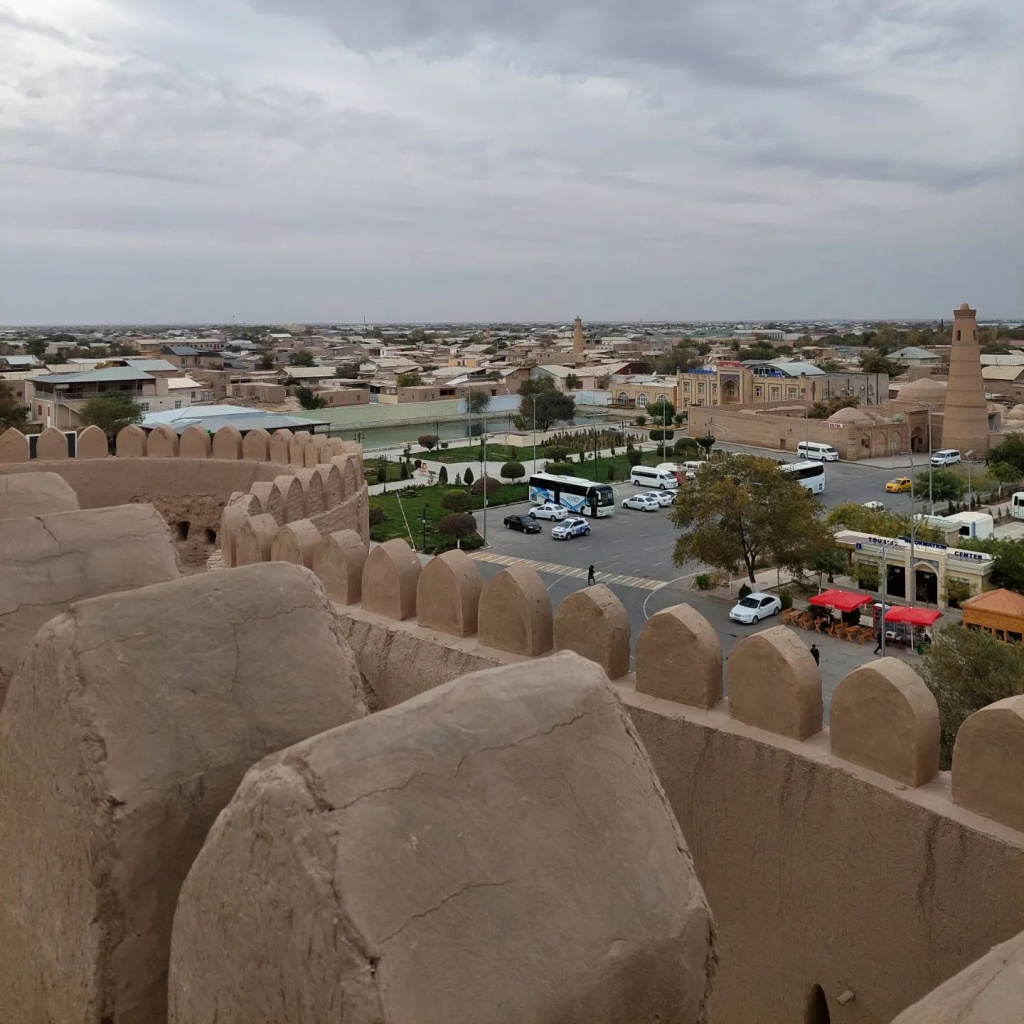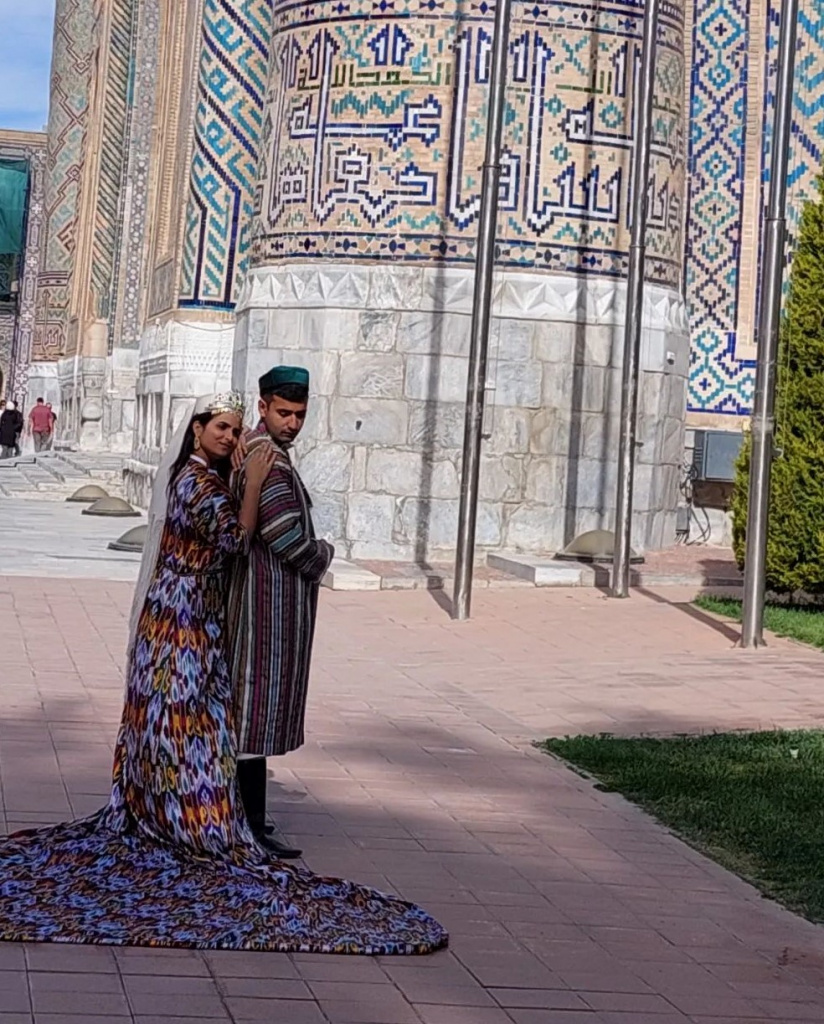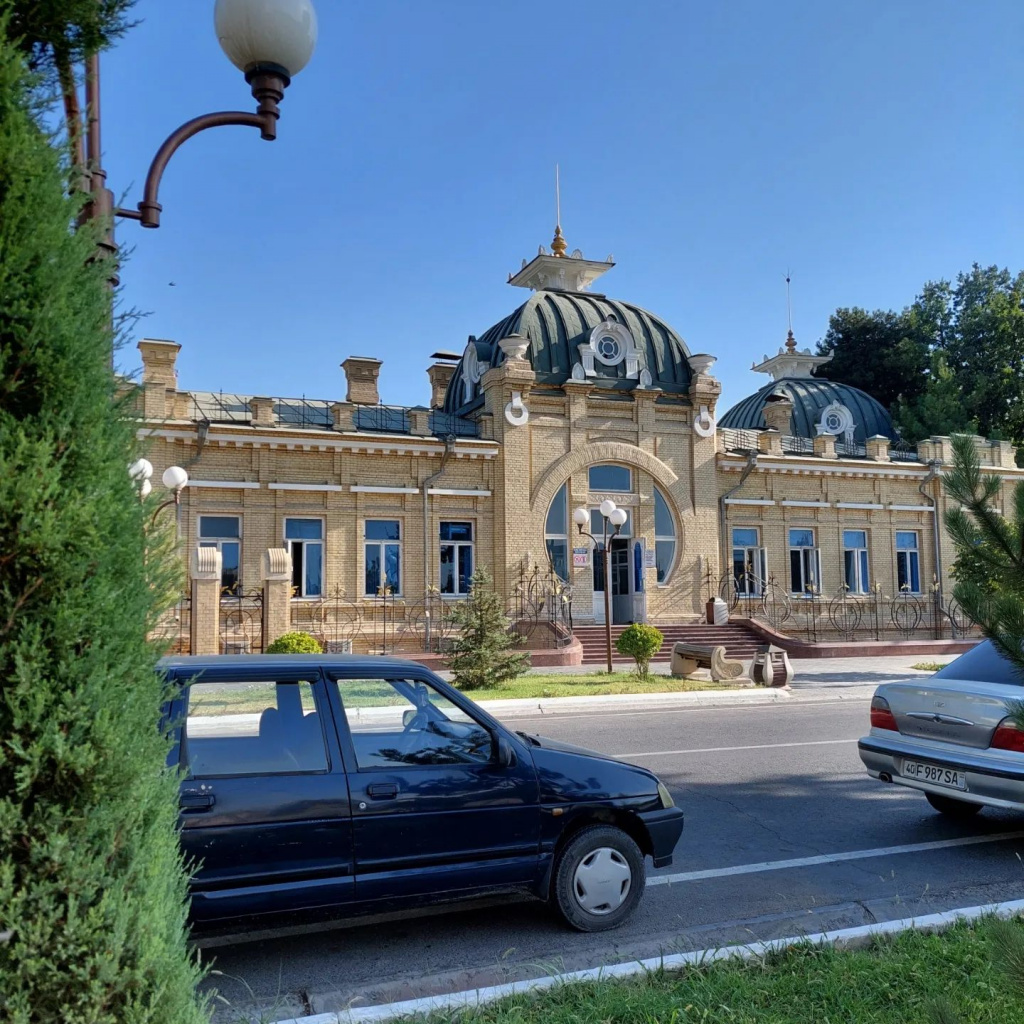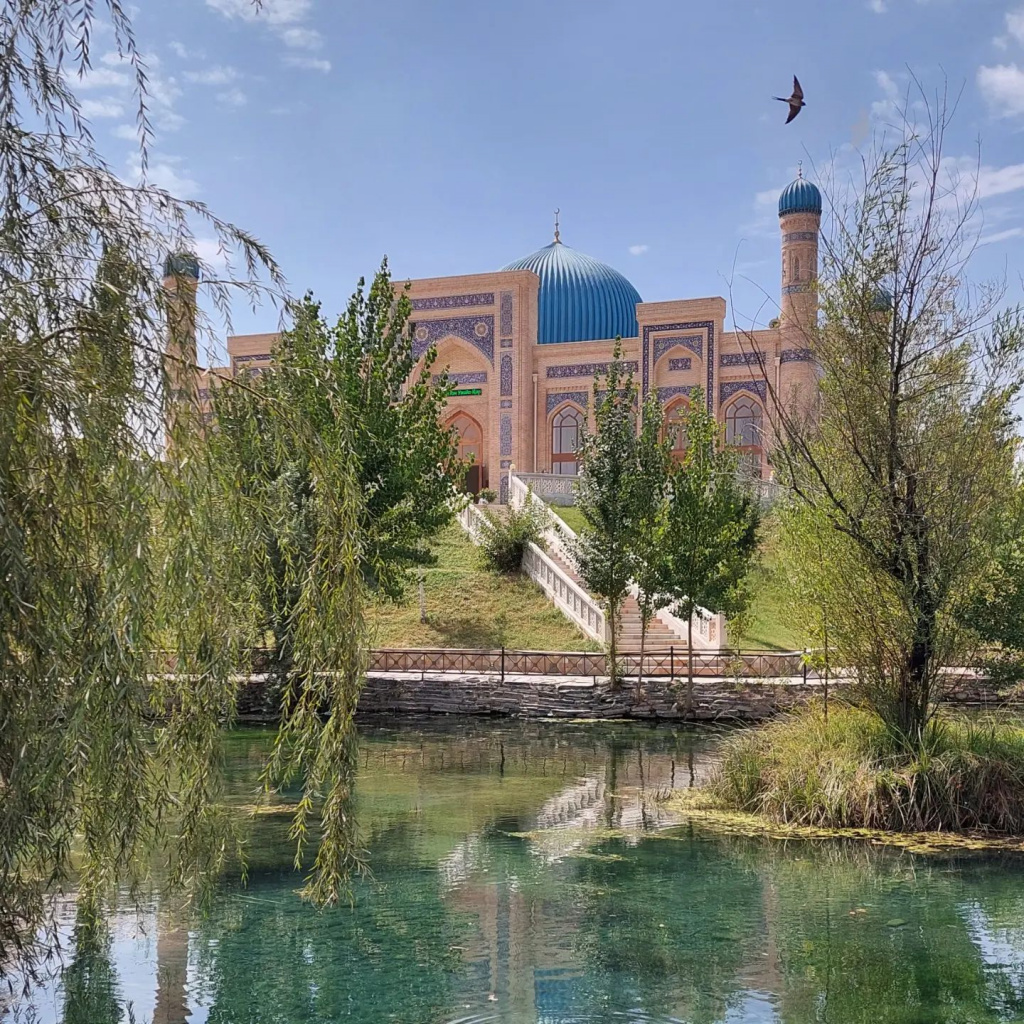
Uzbekistan has recently become more in demand among the Russian tourists. Journalist Elena Guseva, a frequent traveller to Tashkent in recent years, told the EcoTourism Expert about the secret of the Uzbekistan’s attractiveness and what landmarks and sights are worth seeing first of all.
- Among the reviews about visiting Uzbekistan, I met an advice not to stop in Tashkent, but immediately go to the ancient cities ...
- I strongly recommend to visit the capital of Uzbekistan! And not only because Tashkent has become my favorite city where I’ve spent a lot of time in recent years, but also because of the attractions that can be seen in the capital of Uzbekistan only. Among them are the Islamic school Kukeldash Madrasah and the Hazrati Imam Ensemble with the oldest manuscript of the Koran (also: Quran, Alkoran), the Muslim holy book, that belonged to Caliph Usman, the son-in-law of Prophet Muhammad. In addition to old buildings, most of which, unfortunately, were destroyed by the 1966 earthquake, Tashkent has a lot of cutting-edge and modern buildings using traditional national identity. The city has two distinct centres - a 2,000-year-old one in the Old Town from where its history began, and the so-called ‘Russian Tashkent’ with Amir Temur Square and perfectly preserved buildings of the 19th century made of ‘Nikolaev’ bricks. If travellers are lucky to enjoy one of Boris Golender’s tours, they will never look back. This person knows absolutely everything about the capital of the country and competently tells the sightseers about Temur, as well as about the Muslim thinkers and poets of antiquity, about General Kaufman and painter Veresayev, about those Russians who lived in Tashkent in evacuation during the Great Patriotic War, and about the unique bricks. In addition, Tashkent has a unique atmosphere, it really is a grain-producing area called a ‘city of bread’ and a hospitable, welcoming city.
The large Tashkent bazaar Chorsu is, of course, creating a unique atmosphere where the travellers can feel the local flavour, communicate with local people and buy souvenirs. And here, in the so-called ‘refreshment stands’, dishes of the Uzbek cuisine like noryn (homemade noodles with horse meat), samsa (a pie stuffed with meat and sometimes with vegetables), dumgaz (ox tails) are delicious. I advise gourmets to taste dumplings in the dumpling bar near the book market, this bar has been kept by one family since the 1960s. It’s easy to buy and enjoy plov (juicy, greasy lamb-and-rice stew) and lagman (lamb-and-long noodles soup) everywhere, and I advise everyone to buy flatbreads at the flatbread bazaar in Tashkent, they often sell them there from old baby carriages. The products made by the enthusiasts of the developing Uzbek winemaking also deserve a travellers’ attention.

Tashkent has many outdoor terraces and cozy squares where the tourists can see the views of the blooming city. In late February - early March, apricots bloom in the city, and the travellers can admire various trees blooming everywhere until May, like lilacs, chestnut trees, acacias, and also tulips.

Finally, it should be mentioned that travelling around Uzbekistan from Tashkent is most convenient, both short and long trips are offered from the capital. Good roads are laid from Tashkent to the main attractions, and express trains also run.
- What top attractions in Uzbekistan can you recommend for the first visit to the country?
- I think I will not be original while mentioning three main crown jewels of Uzbekistan - the cities of Samarkand, Bukhara and Khiva.

Khiva is considered the most attractive ‘pearl’, which is not surprising. The capital of the once powerful Khoresm Khanate is two and a half thousand years old, its well-preserved historical centre is an area designated by UNESCO as World Heritage Site. This is my most favourite of the three magnificent cities. On my first visit to Khiva, I felt like I was in the scenery of the iconic Russian film “White Sun of the Desert”; and now, the local people live in this stunning scenery, their wet laundry is hung out to dry, a dog is dozing on the porch, a camel is hiding in the shade.
Samarkand and Bukhara are the most ancient cities of the Great Silk Road, they are very active and dynamic. Samarkand is most impressive due to its size and how the past coexists with the present in this ancient city. Near the Mosque of Bibi-Khanum, there is a large food market Siab Bazaar, and a beautiful university boulevard not far from the Mausoleum of Tamerlane.

For those who come to Uzbekistan not for the first time or if time permits, I strongly advise to visit the Ferghana Valley, this is still ‘terra incognita’ for many people, even the residents of Uzbekistan, the ancient cities of Kokand, Andijan, Namangan, Margilan are located behind the high mountains, the road from Tashkent leading through the picturesque Kamchik mountain pass (about 2.3 thousand metres high above sea level) is an amazing adventure.

Kokand, a former capital of the Khanate where oriental exoticism, European practicality and Russian modernity are combined, is famous, among other things, for its crafts, including the manufacture of pichak knives from Damascus steel with traditional ceramic handles. The people working here in forges and potteries are real enthusiasts of their craft. In Rishtan, I heard a story about a ceramist from the Ferghana Valley who sold everything his family had to revive an ancient craft, and I visited his workshop. Margilan, for example, is famous for its silk. Here, all the stages of its production can be seen, from silkworm cocoons to the fabric, as well as the designing of ‘abr’ patterns, known as ‘ikat’ outside of Uzbekistan, and patterns on the thinnest chiffon scarves. They also make handmade wool and silk carpets of various sizes, including miniature ‘earring carpets’. The nature of the valley and its gardens are magnificent as well as the best fruits and vegetables in the country and the lavender fields looking like in Provence ...
- What was surprising to you in Uzbekistan besides ancient cities, nature and Uzbek cuisine?
- For six years, the Uzbekistan’s people have not stopped surprising and fascinating me. Instead of “no”, they always say “We will do it”, instead of asking uninvited guests ‘Who are you and what do you need here?’, they open the doors wider. Travelling around Uzbekistan, we often came to visit some families, or even had a lucky chance to take part in an unfamiliar family party in a village. On the way from Ferghana to Rishtan, for example, we stopped at the gate to take a picture of a beautiful bunch of grapes, and the owner immediately came out and invited us into his yard, cut some bunches of grapes for us and gave them to us. At the bazaar in Margilan, the locals came up and asked where we were from, and warmly greeted us. You know what I mean, this especially rejoices the cockles of my heart today.
- What destinations and attractions would you recommend to lovers of ecotourism in Uzbekistan?
- There are a large number of mountain ranges near Tashkent. For the first visit, I would like to recommend driving along the highway around the Charvak water reservoir, visiting the Chimgan resort area and taking a closer look and choosing the most attractive places for your vacations. There are many hotels and tourist centres where it is convenient to stay, swim in the cool waters of the Charvak ‘sea’ in summer, and go skiing in Chimgan in winter. Not so long ago, the Amirsoy ski resort with its modern infrastructure and new chairlifts began to operate near Tashkent. We went there at the end of April, and there was still much snow!
Travellers can take a walk along the mountain tracts of Aktash, Sukok, Kumyshkan or Yangiabad located at a distance of 50 to 100 kilometres from Tashkent. We are talking about easy walks along mountain rivers and mountain slopes, as well as difficult trails between rocks and through the woods, which are suitable only for trained tourists.
When planning hiking tours, it is also important to remember that the best time for hiking is spring (from March to the end of May) and autumn (from mid-September to the end of October). And a forty-day period from the end of June to the first days of August called ‘chilla’ is the hottest time in summer in Uzbekistan when the temperature is at least 40-45oCelsius and even much higher on some days.
From Tashkent, the travellers can also go to the Zaamin State Reserve on the border with Tajikistan. There are also stunning mountains and blue lakes, and in April-May, the juniper covering the slopes blooms and everyone can enjoy the smell of these fragrant flowers. For hiking, the mountainous surroundings of Jizzakh are beautiful.
A trip to Nukus the capital of Karakalpakstan, is among longer ones, and expeditions to the drying Aral Sea start from this city. By the way, Nukus is also famous for its Savitsky Museum of Art that has a unique collection of the Russian and Turkestan avant-garde art pieces. So, there is an opportunity to combine ‘the useful with the beautiful’, and also visit the ancient Karakalpak fortresses of the 1st-4th centuries.
Uzbekistan is a huge amazing country where ancient cities and monuments coexist with unique nature, including deserts, mountains, lakes, canyons, caves, and waterfalls. It is impossible even to mention all the beautiful places in one interview …

- Moreover, they are impossible to remember immediately. What modern guide-books can help in the acquaintance with Uzbekistan?
- There are a lot of guide-books. They are probably useful, but are intended for glimpsing the attractions. If you want a ‘deep dive’ and discover the real Uzbekistan with its living history, understand how to look at the old times and how people live, I highly recommend modern books about the country. One of them is “My Uzbekistan” by a travelling blogger Darya Sirotina. The book captivates not only with love for the sights and extensive information about them, but also with an overview of places to stay, cafes and restaurants, contacts of hoteliers, restaurateurs, wineries, craft centres, and shops.
It so happened that at first, I read this book and got interested in the unusual look with a fresh eye at Uzbekistan, and then I met Daria and those interesting people she writes about like designers, craftsmen, art critics. I took much information about Uzbekistan from her notes. But, most importantly, it became interesting to once again look at those places where, it would seem, we have already been, but did not see any things, overlooked them.
It may happen that Uzbekistan does not always ‘open’ to a traveller in the first visit, during one trip. This makes all the more interesting to study it, visit new places, get new impressions and experiences. My classmates are coming to me the other day, and we will go to Khiva and Samarkand together to take a walk around Tashkent and its environs, and I am sure, I will see many things I did not see in my previous trips.
Photos courtesy of Elena Guseva
